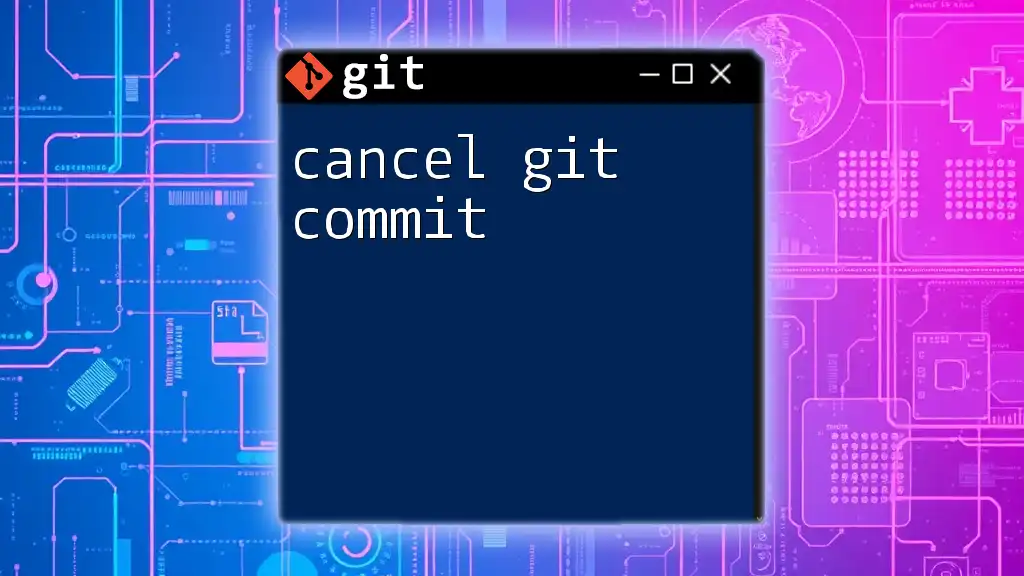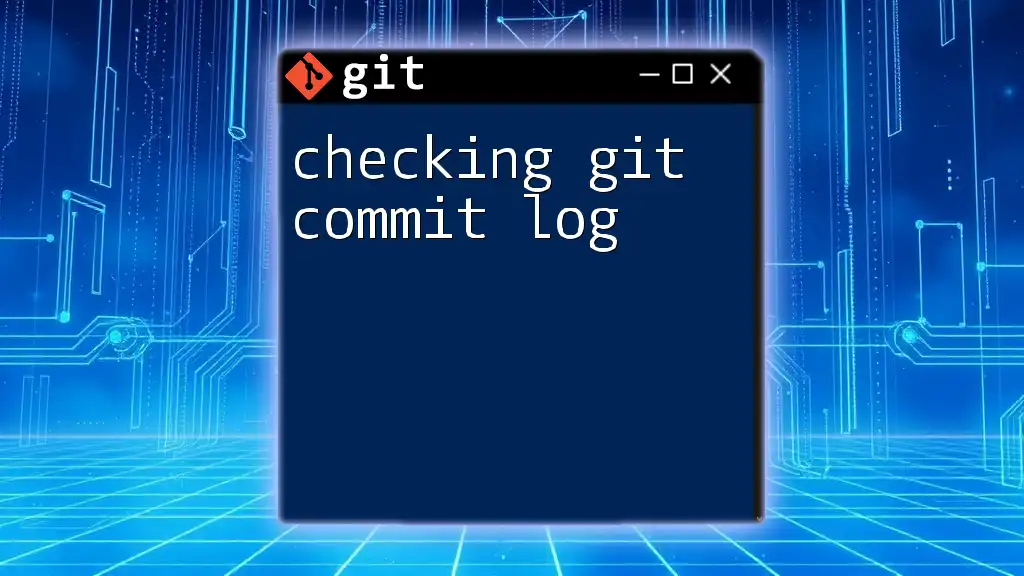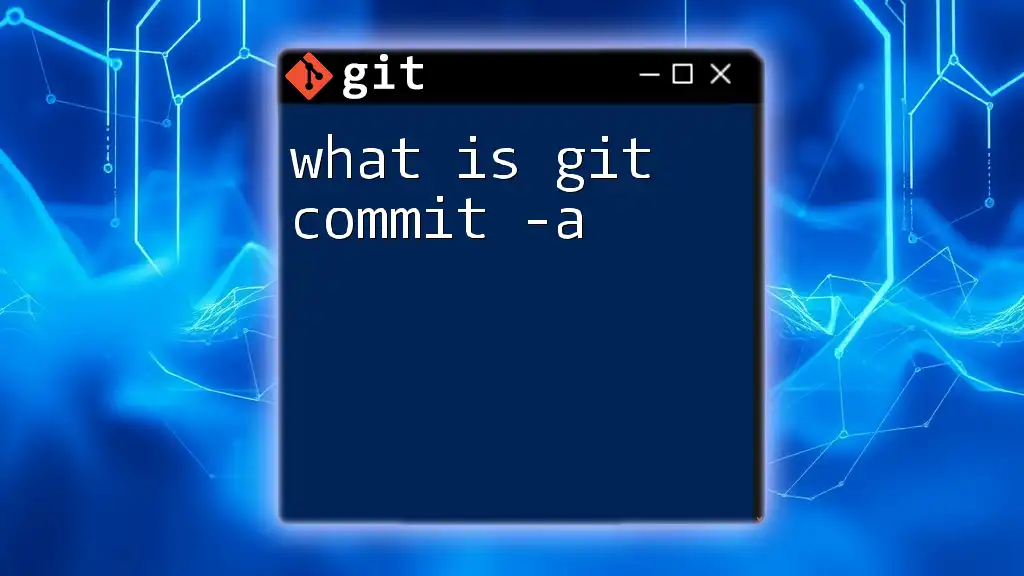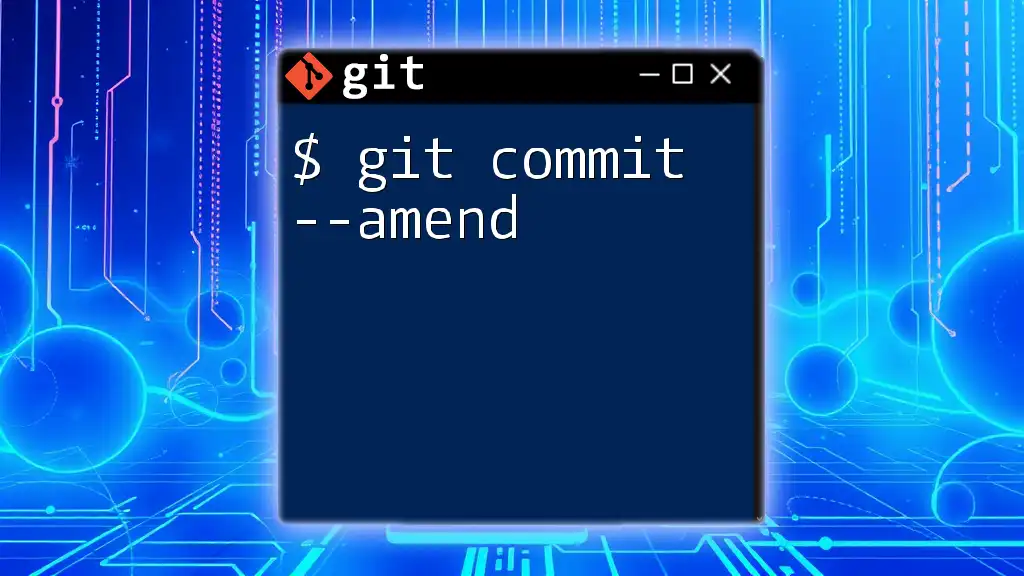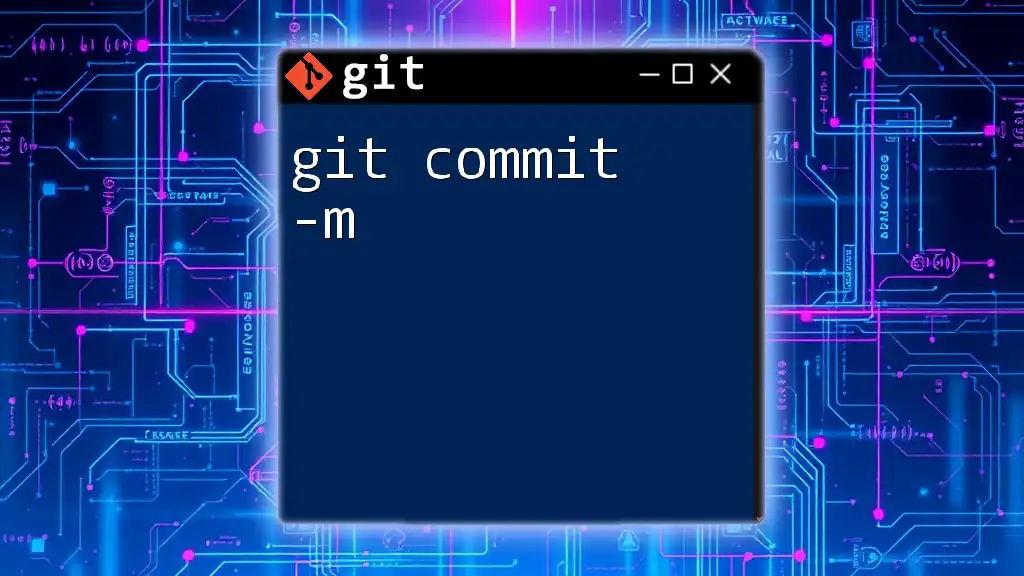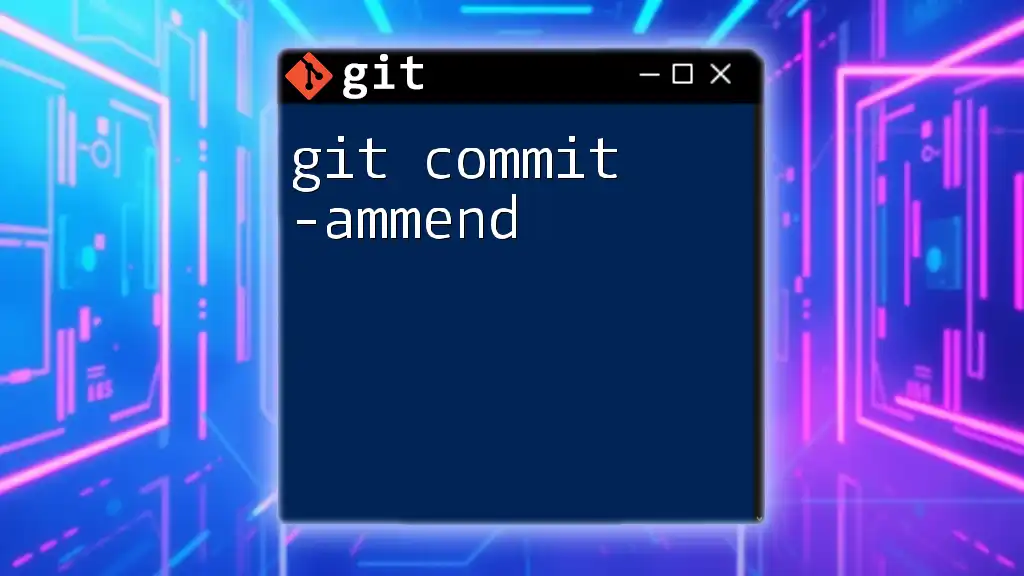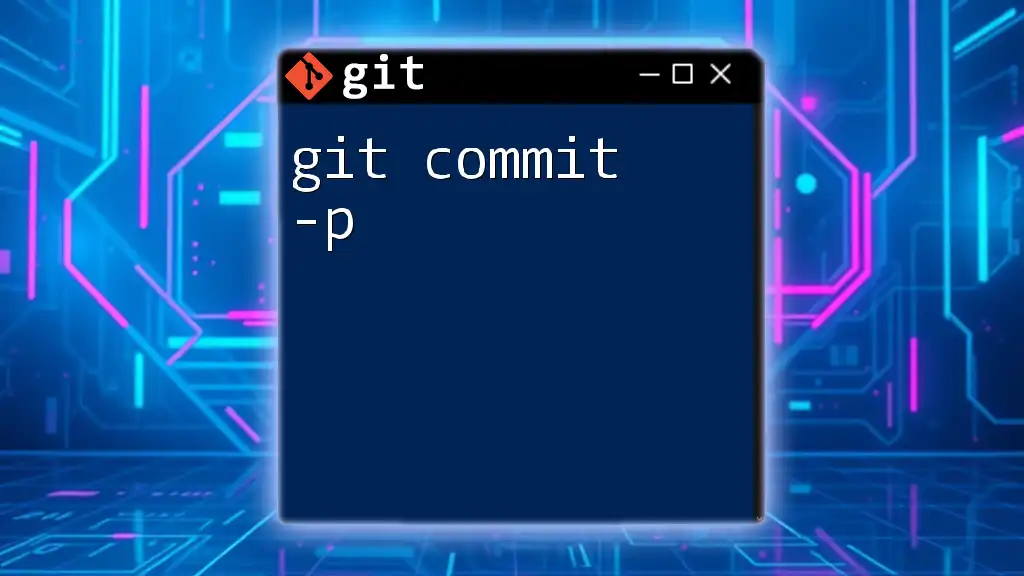To cancel a Git commit that hasn't been pushed yet, you can use the following command to reset your last commit while keeping your changes staged:
git reset --soft HEAD~1
Understanding Git Commits
What is a Git Commit?
A Git commit is a snapshot of your project at a specific point in time. It contains all the changes you’ve made to your files since the last commit, capturing the state of your project. Each commit serves as a historical record of your development work, allowing you to track changes and collaborate effectively with others.
The importance of commit messages cannot be overstated. A well-written commit message helps your teammates—and future you—understand the purpose of the changes. Good commit messages typically include a brief summary followed by more detailed descriptions when necessary.
Commits maintain project history, serving as a time capsule. Whenever you need to view or revert to a previous state of your project, commits are your go-to reference points.
Overview of the Commit Process
Before making a commit, it’s essential to follow a few best practices:
- Review your changes carefully.
- Make sure that you’re committing only the intended modifications.
- Write clear and informative commit messages.
By taking these steps, you streamline the process and reduce the likelihood of needing to cancel a commit later.
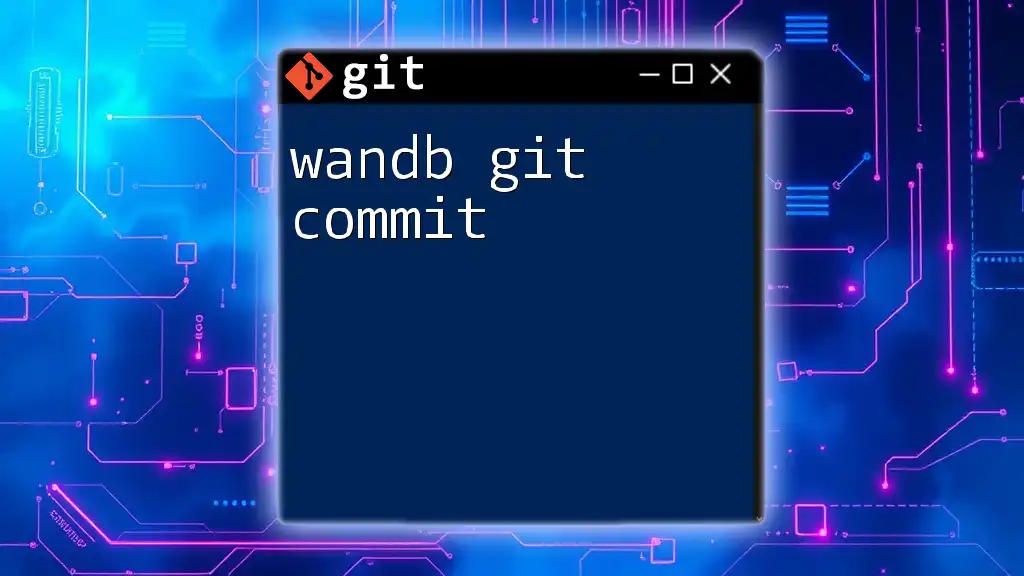
Reasons for Canceling a Git Commit
Common Scenarios for Canceling a Commit
There are several situations in which you might need to cancel a git commit:
- Mistakes in commit message: Spelling errors or vague descriptions can confuse other team members.
- Committing the wrong files: Sometimes we begin working on a different aspect and inadvertently include unrelated changes.
- Accidental multiple commits: In the haste of development, you might end up with several quick commits that should be consolidated.
Impact of Canceling a Commit
Understanding the impact of canceling a commit is crucial. You should differentiate between local and remote implications:
- Local implications: Cancelling a commit on your local machine doesn’t directly affect anyone else’s version of the repository.
- Remote implications: If you’ve already pushed the commit to a shared repository, canceling can create inconsistencies. It’s vital to communicate these changes to your teammates.

How to Cancel a Git Commit
Undoing the Last Commit with `git reset`
The primary command to cancel a git commit is `git reset`. This command allows you to move the HEAD pointer back to a previous commit, effectively “undoing” your last commit.
There are different options for `git reset`, each with its specific behavior:
- `--soft`: This option keeps your changes staged, allowing you to make adjustments and create a new commit as if it were a continuation of the canceled one.
- `--mixed`: This is the default option, which unstages your changes but keeps them in your working directory.
- `--hard`: Caution! This option completely removes all changes from your working directory and index, making it impossible to recover them unless you have a backup.
Example Usage:
git reset --soft HEAD~1
git reset --mixed HEAD~1
git reset --hard HEAD~1
Using `git revert` for Public Commits
When working in a collaborative environment, `git revert` is often the safer approach to cancel a public commit. Unlike `git reset`, `git revert` creates a new commit that undoes the changes of the specified commit, preserving the integrity of the project history.
Use this command when you need to undo a commit that has already been shared with others.
Example Usage:
git revert HEAD
This command will generate a new commit that inverses the changes introduced by the last commit.
Amending the Last Commit
On occasion, you might not want to completely cancel a commit, but instead, make modifications to it. The `--amend` option is an excellent tool for this purpose.
This command allows you to change the commit message or add forgotten changes without creating a new commit. Simply use it right after making a commit that you wish to amend.
Example Usage:
git commit --amend
You can edit the commit message directly in your text editor or include staged changes in the amended commit.

Tips for Avoiding the Need to Cancel a Commit
Consistent Commit Messages
Writing clear and consistent commit messages can help avoid confusion and mistakes. Consider adopting a structure for your messages, such as starting with a brief summary of the change, followed by a more detailed explanation if necessary.
Effective commit messages provide context for why changes were made, making it easier for collaborative teams to navigate the project’s history.
Using Branching Effectively
Branches serve as isolated environments for your changes, which greatly minimizes the impact of mistakes on the main project. By committing to a feature branch, you can freely experiment without affecting the stable codebase. This approach not only enhances your workflow but also ensures that the main branch is protected from unwanted commits.
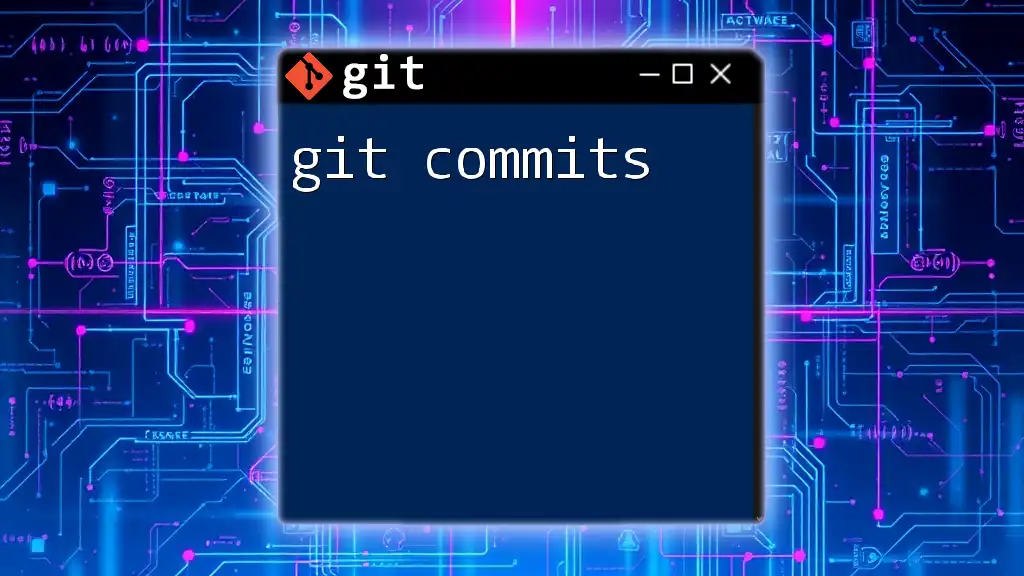
Conclusion
Summary of Techniques for Cancelling Git Commits
In summary, whether you need to use `git reset`, `git revert`, or amend your last commit, understanding how to cancel a git commit is an essential skill. Each of these methods serves different use cases, and choosing the right one depends on your circumstances.
Encouraging Good Git Practices
By being proactive in utilizing best practices—such as writing informative commit messages and working in dedicated branches—you can significantly reduce the need to cancel commits. Remember, a disciplined approach to version control not only streamlines your workflow but also enhances collaboration within your team.
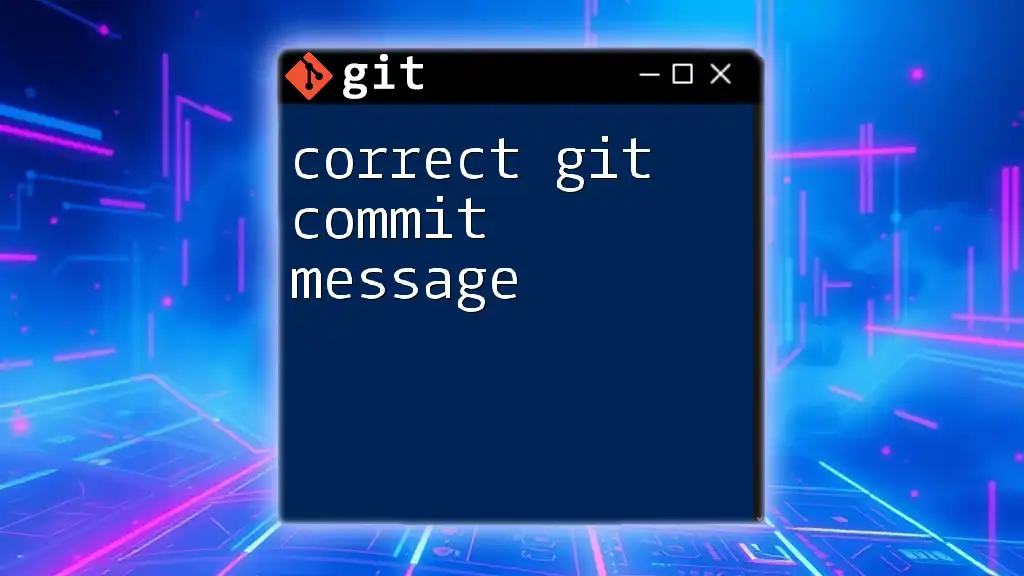
Additional Resources
Explore links to further reading about Git best practices and consider using Git GUI tools. These tools can simplify commit management and make your version control experience more efficient.

